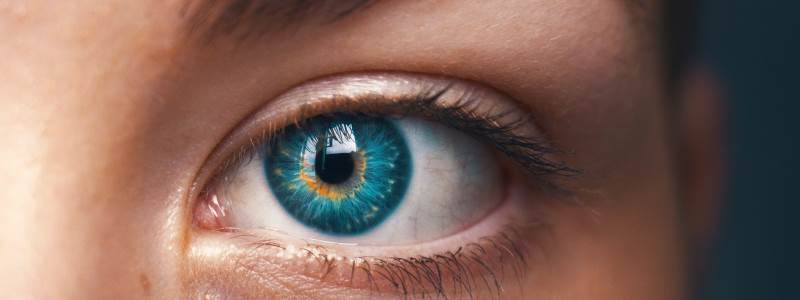This part of the eye is quite flexible. It can change its shape to help focus on objects at varying distances. What part of the eye is this? The lens! Welcome to the second part of our blog post focusing on the different structures that make up the eye. This week’s blog will focus on the lens’ function, anatomy, and related diseases. We hope you enjoy it!
Where Is The Lens & What Does It Do?
The lens is located behind the iris – the colored part of the eye. Not to be confused with contact lenses, which are a medical device that is used to help you see clearer! The lens is a transparent, elastic tissue that changes in order to help us see. It helps us see by focusing light onto the retina. Last week’s blog post explained how the eye sees by absorbing light rays. We learned that the retina helps transform these light rays into electric impulses which travel down the optic nerve and to the brain. The brain then formulates an image based on these impulses. Before the retina can transform those light rays, they must reach it. This is where the lens comes into play. You can think of the lens in the same way as a lens in a camera. It focuses light with the help of the cornea so that it is clear (or undistorted) onto the retina.
Eye Issues Relating To The Lens
Now that we know that the lens is an integral part in helping the retina receive undistorted light rays, we can go on to discuss some of the issues that can occur with this specific part of the eye.
Cataracts
The first one, cataracts, occurs when the lens of the eye becomes opaque. Generally, cataracts are associated with aging. However, cataracts can also be a result of diabetes or smoking. The lenses inability to pass light clearly to the back of the eye, makes images appear to be blurry or cloudy. You could equate this to seeing through a dirty window – things just aren’t clear! Cataract treatment includes new eyeglasses/sunglasses or cataract surgery (which is the only permanent treatment). During corrective cataract surgery, an artificial lens will replace your old faulty one, helping you to see again!
Presbyopia
A second eye condition involving the lens is presbyopia. People will start to notice the effects of this eye condition as they age. It begins in middle-aged adults. The lens loses its elasticity and us unable to focus on objects at close distances. Patients, generally start noticing they are suffering from presbyopia when they start having to hold reading material like a newspaper further away from their faces to see the print. If you already are nearsighted, you can ask your eye doctor for an updated prescription to get bifocal or multi-focal lenses to help you see clearly at all distances. There are also options for those who wear contact lenses.

Are you having trouble seeing clearly? It’s best to come in sooner than later. Give us a call or book online with Dr. Sharma.
Remember an eye exam is more than just new specs, it’s a chance to ensure your eyes are healthy too.
